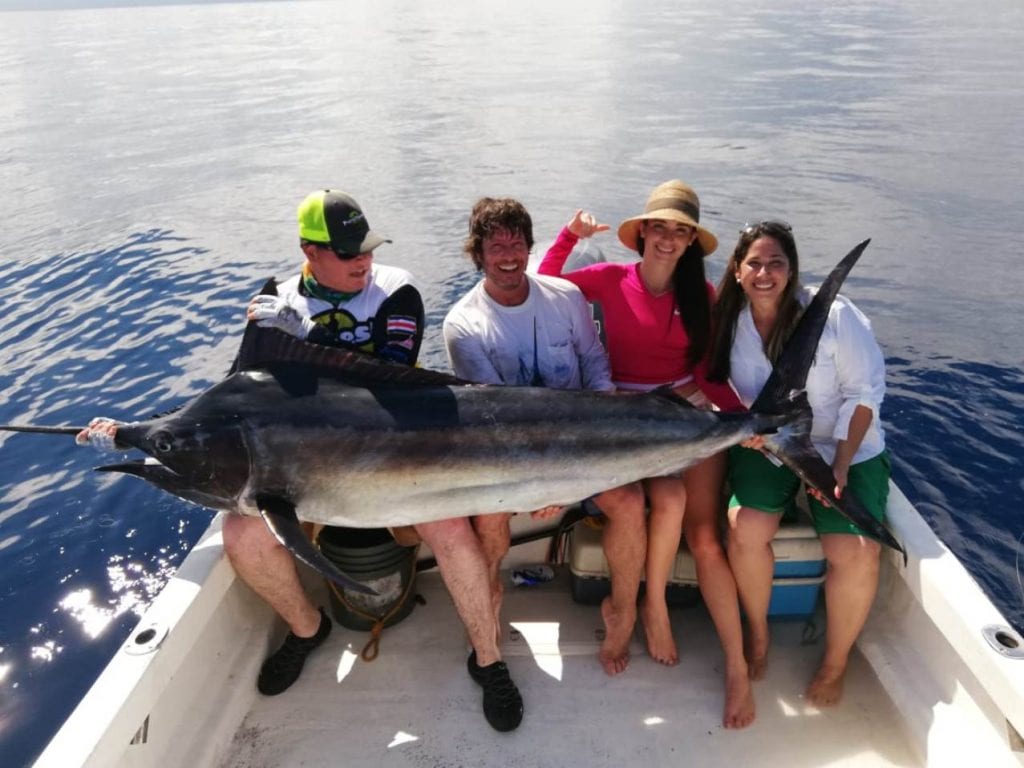Fishing in Guanacaste
Cabo Blanco to the Gulf of Papagayo Flamingo Beach, with a full-service marina, is the major sportfishing center in the northern coastal area, but boats also charter out of nearby Coco’s beach, Tamarindo, Ocotal, Potrero, Playa Hermosa, Brasilito, and a few points in between.
A bit further south, there are boats operating below Cabo Blanco, out of Nosara, Garza, Sámara, and Carrillo beach, a region that gets more protection from the winds that normally blow late December into March and April. Some boats from the more northerly areas often base at Carrillo beach from about December through March if the wind is blowing and the main billfish population is moving north from the central coast area.
Seasons
Marlin: At this beach, you will ride a wave known as Ollies Point: it is a fast and perfect wave that breaks to the right over a rocky sea bottom. When waves are coming in from the south, this wave ranges from 2 to 7 feet high. Access to the beach is only possible by boat from Playa del Coco or Guajiniquil. If you wish to camp on the beach, you must bring a complete camping set, including food and water. There are few surfers on this beach.
Sailfish: Caught throughout the year; with May through August normally the top season. They may begin to thin out in September and from late August Through November.
Tuna: Peak months are probably August through October; but when all these fail, there are always tuna, any time of the year you want to look for them, and more open than not when you’d just as soon avoid them to concentrate on billfish. The yellowfin and some bigeye tuna are often found well inside the Santa Catalina Islands, 30 minutes or less running time from the beach, while schools of 12 to 20 pounders are usually abundant on the outside. You frequently find concentrations of 40 to 60-pound tuna, and there is plenty of the 200 to 400 pounder caught every year.
Dorado: More properly known as dolphin, these colorful gamesters are most abundant from late May through October when the seasonal rains flood the rivers, carrying out debris that form trash lines close inshore that they like to lie under. Troll past a floating long and you’ll like to hook a dorado.
Wahoo: The first showing begins about the time the rains start in May, peaking in July and August. Most are caught around the rocky points and islands, but you will pick one up occasionally fishing offshore.
Roosterfish: Available all year, but are more caught in the Papagayo Bay area from November through March. That may be because more boats in the northernmost area of this region are fishing inshore during those windy months. and the roosters like the structure of the shoreline and islands where they’re found 50 to 60 feet of water.


